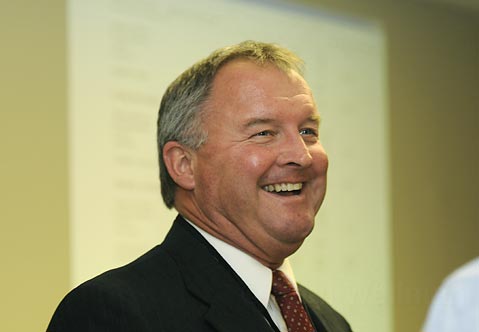Redistricting Woes: Too Old, White, Male, and Republican
Applicant Pool for New Santa Barbara County Redistricting Commission Lacks Diversity, Object Critics

The process by which political district boundaries are redrawn is always fraught, now only more so. Already, complaints are surfacing about the process by which Santa Barbara County election czar Joe Holland winnowed 170 applicants down to a pool of 45 qualified prospective candidates for the new 11-person redistricting commission.
“It definitely skews white, old, male, and Republican,” objected Mary Rose, a longtime political consultant. Given that Latinos make up 46 percent of the county’s population, why do they make up only 12 percent of the pool of 45? she asked. How are there only four qualified candidates representing people under 35?
If Rose is vexed by the results, there’s cause. She was instrumental in the crafting the proposal that went before county voters two years ago in the form of Measure G. This was in response to another redistricting commission proposal backed at the time by the oil companies known ironically as RIG, short for Restore Integrity in Government. Measure G won that contest, largely on the promise its commission would reflect the demographic diversity of the community.
Get the top stories in your inbox by signing up for our daily newsletter, Indy Today.
For his part, Holland is tight-lipped. “I suggest you read Measure G,” he stated. He declined to explain how the president of Alan Hancock College did not make the cut to qualify for the pool of 45 but that a Santa Maria resident in his early sixties with no history of civic involvement did. “I’m not going to get into that,” Holland stated. “Basically, I did my job.”
Holland cited the fine print of Measure G that mandated the 45 finalists he selected need only to demonstrate “the analytical skills relevant to the redistricting process,” “an ability to be impartial,” and “experience that demonstrates an appreciation for the diverse demographics and geography of the County of Santa Barbara.”
To the extent other provisions in the measure require representation of the county’s demographic diversity — which they do in considerable detail — Holland said that task falls not to him but to the first five members who are to be selected from the 45 finalists by District Attorney Joyce Dudley on October 13. They, in turn, are to select the six other members from those left in the pool of 45 Holland assembled.
Once empaneled, this group of 11 will fashion the next set of supervisorial district boundaries — always a politically charged and logistically challenging endeavor — as required by law every 10 years in response to new Census numbers.
“We wrote the initiative so the commission would reflect the county’s diversity,” said County Supervisor Das Williams, who spearheaded the effort to get Measure G written and passed. “They need a pool that reflects the county’s diversity in order to make the final commission meet what the initiative stated.”
Rose lamented the confusion and what she termed lack of transparency. Santa Barbara, she noted, is the first and only county in the state to have created its redistricting commission via a popular vote. The problem with being first, she added, is that not all the kinks get worked out.
Every day, the staff of the Santa Barbara Independent works hard to sort out truth from rumor and keep you informed of what’s happening across the entire Santa Barbara community. Now there’s a way to directly enable these efforts. Support the Independent by making a direct contribution or with a subscription to Indy+.



